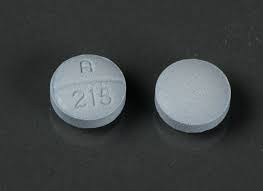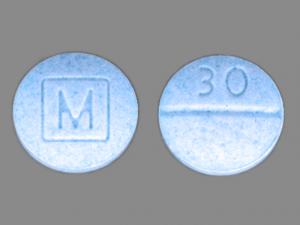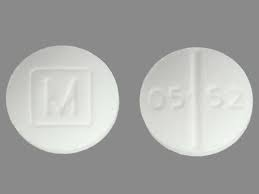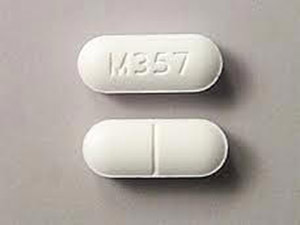Oxycodone 30mg is a potent opioid analgesic prescribed for the management of moderate to severe pain that is unresponsive to non-opioid treatments. It functions by binding to opioid receptors in the central nervous system, altering the perception and response to pain. This medication is available in both immediate-release and extended-release formulations.Drugs.com
Indications
Oxycodone 30 mg is indicated for the relief of moderate to severe pain in patients requiring continuous, around-the-clock opioid treatment for an extended period. It is typically prescribed when alternative treatment options are inadequate.
Dosage and Administration
-
Immediate-Release Tablets: Designed for acute pain management, these tablets are usually taken every 4 to 6 hours as needed.
-
Extended-Release Tablets: Intended for chronic pain requiring continuous treatment, these tablets are taken every 12 hours.
Dosage must be individualized based on patient needs, previous treatment experience, and risk factors for addiction, abuse, and misuse. It is crucial to follow the prescribing physician’s instructions precisely to minimize risks.Trusted Health Advice+1Verywell Health+1

Warnings and Precautions
-
Addiction and Abuse: Oxycodone has a high potential for addiction, abuse, and misuse, which can lead to overdose and death.MedicineNet
-
Respiratory Depression: Serious, life-threatening, or fatal respiratory depression may occur, especially during initiation or dose escalation.WebMD+2MedicineNet+2Drugs.com+2
-
Accidental Ingestion: Accidental consumption, particularly by children, can result in a fatal overdose.Drugs.com+1MedicineNet+1
-
Neonatal Opioid Withdrawal Syndrome: Prolonged use during pregnancy can result in neonatal opioid withdrawal syndrome, which may be life-threatening if not recognized and treated.MedicineNet
-
Interactions: Concomitant use with other central nervous system depressants, including alcohol, can result in profound sedation, respiratory depression, coma, and death.MedicineNet
Side Effects
Common side effects include:
-
Nausea and vomiting
-
Constipation
-
Drowsiness or dizzinessMayo Clinic+2Trusted Health Advice+2WebMD+2
-
Dry mouthTrusted Health Advice+4MedlinePlus+4Mayo Clinic+4
-
Headache
Serious side effects may include:
-
Respiratory depression
-
Severe hypotension
-
Adrenal insufficiency
-
SeizuresMayo Clinic+1WebMD+1
-
Allergic reactions
Patients should seek immediate medical attention if they experience symptoms of serious side effects.
Storage and Disposal
-
Store at room temperature, away from moisture and heat.
-
Keep out of reach of children and pets.
-
Dispose of unused medication through take-back programs or by following FDA guidelines to prevent misuse.
Legal Classification
Oxycodone is classified as a Schedule II controlled substance under the Controlled Substances Act, indicating a high potential for abuse and dependence.
Note: This medication should only be used under the supervision of a qualified healthcare provider, with careful consideration of the potential risks and benefits.Drugs.com
For more detailed information, please consult the prescribing information or speak with a healthcare professional.
FAQ FOR Oxycodone 30mg
General Information
Q: What is Oxycodone 30 mg used for?
A: Oxycodone 30 mg is prescribed to relieve moderate to severe pain, particularly when other pain treatments are ineffective. It is available in immediate-release (IR) and extended-release (ER) forms, depending on the patient’s needs.
Q: How quickly does it work?
A: The immediate-release form typically begins to relieve pain within 10–30 minutes, reaching peak effect in about 60–80 minutes. The extended-release version takes longer to act, with peak effects occurring approximately 4–5 hours after ingestion. Verywell Health
Q: What is the difference between Oxycodone and OxyContin?
A: Oxycodone refers to the active ingredient available in both immediate and extended-release forms. OxyContin is a brand name for the extended-release formulation of oxycodone, designed to provide continuous pain relief over 12 hours. Verywell Health
Safety and Side Effects
Q: What are the common side effects?
A: Common side effects include:
-
Nausea and vomiting
-
Constipation
-
Drowsiness or dizzinessVerywell Health
-
Dry mouth
-
SweatingVerywell Health+4Verywell Health+4Verywell Health+4
Serious side effects may include respiratory depression, low blood pressure, and allergic reactions. Verywell Health
Q: Can I become addicted to oxycodone?
A: Yes, oxycodone has a high potential for addiction and dependence, especially with prolonged use. It is classified as a Schedule II controlled substance due to its risk of abuse. Verywell Health
Q: What happens if I stop taking it suddenly?
A: Abrupt discontinuation can lead to withdrawal symptoms such as anxiety, muscle aches, insomnia, and flu-like symptoms. It’s important to consult your healthcare provider for a proper tapering plan.
Interactions and Precautions
Q: Can I take oxycodone with alcohol or other medications?
A: No, combining oxycodone with alcohol or other central nervous system depressants can increase the risk of severe side effects, including respiratory depression and death.
Q: Is it safe during pregnancy?
A: Prolonged use during pregnancy can result in neonatal opioid withdrawal syndrome, which may be life-threatening if not recognized and treated. Always consult your healthcare provider before using oxycodone during pregnancy.
Administration and Storage
Q: How should I take oxycodone 30 mg?
A: Take oxycodone exactly as prescribed by your healthcare provider. Do not crush, chew, or break extended-release tablets, as this can lead to a potentially fatal overdose.Verywell Health+2en.wikipedia.org+2Verywell Health+2
Q: How should I store it?
A: Store oxycodone at room temperature, away from moisture and heat. Keep it out of reach of children and pets. Dispose of unused medication through take-back programs or by following FDA guidelines to prevent misuse.
















Reviews
There are no reviews yet.